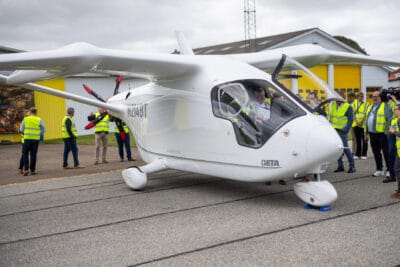Canada defines EV sales quotas leading up to 2035
The Canadian government now mandates a quota of at least 20 per cent from 2026. This will increase to 60% from 2030 and 100% from 2035. The decision aligns with the proposal published a year ago, almost to the day and letter.
As before, ZEV does not necessarily mean entirely emission-free because the Canadian government summarises plug-in hybrids that offer a certain purely electric range under this term. In today’s announcement, the government only states that PHEVs must run exclusively on electricity for a “specified minimum distance before they transition to operating as hybrid vehicles” – without specifying said distance.
Another reference to PHEVs only appears much deeper in the text when detailing an adapted credit system Canada is introducing.
PHEVs with a minimum range of 80 kilometres count as one credit, including 2035 and beyond. At the same time, lower- and mid-range PHEVs still receive partial credits depending on the number of seats (up to 7) and the year. From 2028, PHEVs must have a minimum range of 80 kilometres to fully count towards a manufacturer’s or importer’s ZEV fleet.
The credit system is to ease the transition, writes the government while reflecting the actual performance of today’s models. The government also believes the early years are “when it counts the most”.
This is also the idea behind the early action credits (EACs) for sales in model years 2024 and 2025. To qualify, a company’s fleet must have had at least eight per cent ZEVs in 2024 and 13 per cent in 2025. Early movers can also generate credits by installing charging infrastructure, but not beyond 2030.
Generally, companies that perform better than their ZEV targets generate credits which they can bank for up to five model years or trade. Companies that do not meet their targets generate a deficit, which must be discharged within three model years. No accumulated or banked credits can offset a deficit in model year 2035 and beyond.
For medium- and heavy-duty vehicles, Canada aims to achieve 35 per cent electric by 2030 and increase to 100 per cent in most vehicle categories by 2040. Manufacturers may opt to exclude emergency vehicles.
The Incentive for Zero Emissions Vehicle Program (iZEV) remains in place. It offers consumers up to $5,000 in new electric vehicle purchase incentives.





0 Comments